
plant of the month: elder
The scientific name for elder is Sambucus nigra – the nigra refers to the very dark colour of the berries. What to look for:
- In winter and without leaves, elder is easily recognised. Usually a tall shrubby plant, elder's slender trunk is marked by vertical, corky ridges and its branches are slim and straight with darker coloured surface dimples.
- In spring, clusters of tiny green buds appear, growing as if on the end of an umbrella's spokes – these are called ‘umbels’. Elder's miniature buds turn into aromatic flowers. In late summer, they become reddish-purple berries.
- Elder leaves are slightly serrated, veined and grow in opposite pairs. The stalks are often red where they join the trunk.
fact file
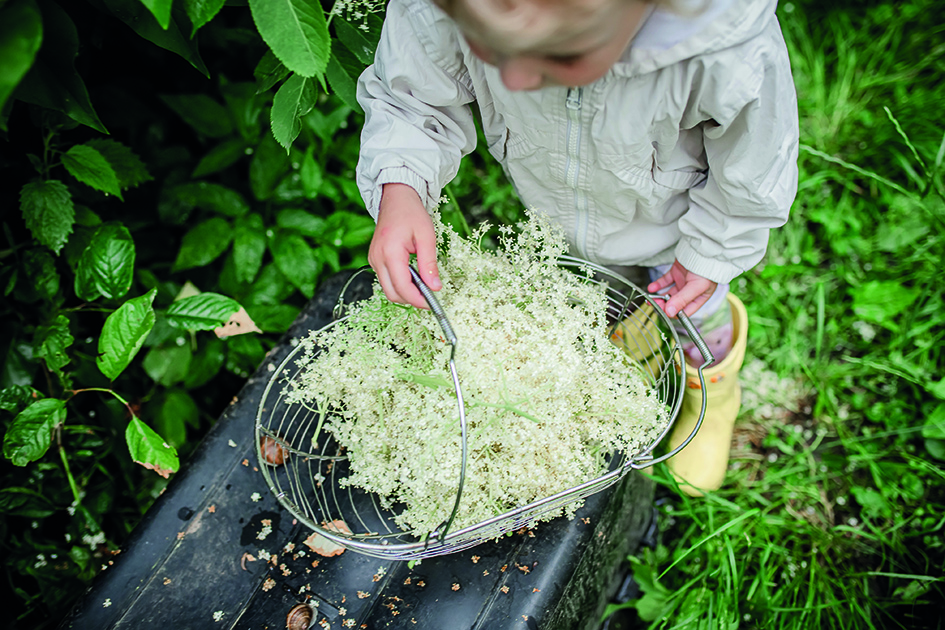 Elders are the host to the parasitic wood-ear fungus, a pinky-brown jelly-like plant that's frequently spotted in autumn. Remind children that with fungi, they can look but mustn't touch. If you have protective gloves, remove a piece of the fungus and slice it up with a sharp knife or scalpel so that children can look at the inside of the fungus.
Elders are the host to the parasitic wood-ear fungus, a pinky-brown jelly-like plant that's frequently spotted in autumn. Remind children that with fungi, they can look but mustn't touch. If you have protective gloves, remove a piece of the fungus and slice it up with a sharp knife or scalpel so that children can look at the inside of the fungus.- Elders have a strong scent – lots of people think elders smell of petrol, or cat wee! They are often found by badger setts – the animals eat the fallen berries and the indigestible elder seeds come out in the badgers’ droppings.
- Cooked elderberries are edible – but very sharp tasting in their raw state and poisonous if eaten in quantity. As always, children should be encouraged not to pick and taste berries without an adult telling them it is okay to do so.
stories
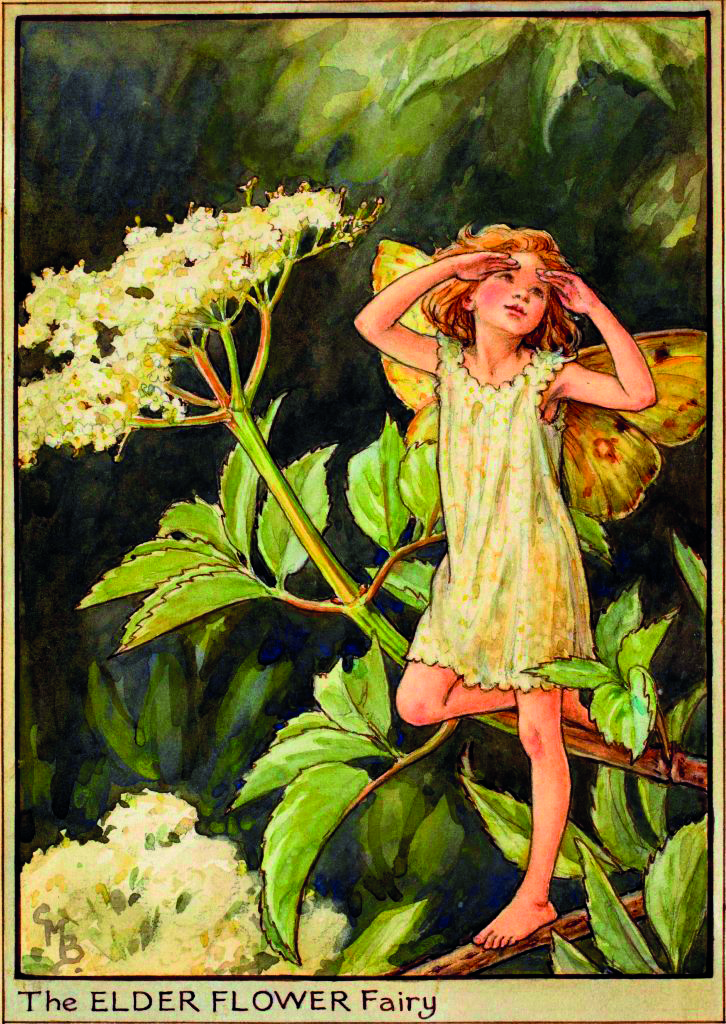 Read Cicely M Barker's poem The Elder Flower Fairy:
Read Cicely M Barker's poem The Elder Flower Fairy:
When the days have grown in length,
When the sun has greater power,
Shining in his noonday strength;
When the Elder Tree's in flower;
When each shady kind of place
By the stream and up the lane,
Shows its mass of creamy lace —
Summer's really come again!
Hold a fairy party as close to midsummer as you can – the best time of year ‘to try to find them’. If you have an elder tree, host a picnic under it and tell fairytales. How big do they think a fairy is? Collect an umbel so children can attempt estimates using the image of the poem (left) as a guide.
aims of this series
Many of us suffer from ‘plant blindness’. But if we don't notice common plants around us, how can we teach the next generation to care for plants which feed us, give us medicine, clothes and many other things upon which we depend? So, every month during 2023, we’ll look at some of the main features of common plants and explore how to make the most of them for play and learning.
There are a few tools and resources that will help you make the most of elder explorations, so if you don't already own them, put out a call to parents and local businesses to see if they can donate, and check charity shops and car boot sales:
- Secateurs to cut stems, loppers or a small pruning saw for thicker stems.
- Metal tent pegs for pushing out the central pith.
- Nail polishes for decorating sticks.
elder springboards
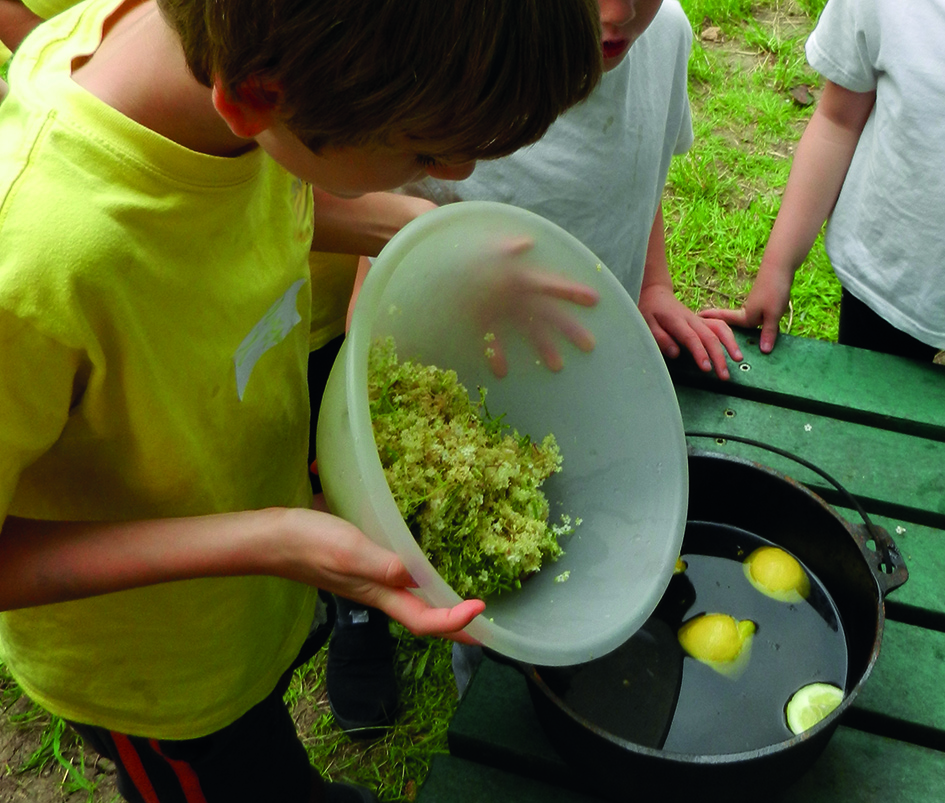
 Spring is a magical time for elder – its flowers are perfect for making elderflower cordial with. I make it on the campfire with children every year and use the BBC Good Food website recipe.
Spring is a magical time for elder – its flowers are perfect for making elderflower cordial with. I make it on the campfire with children every year and use the BBC Good Food website recipe.- Look out for bees and butterflies in early summer, when the elderflowers are on full display. The nectar is a valuable food source for insects, and moths will lay their eggs on elder leaves, with the caterpillars then eating the leaves.
- In late summer and early autumn, elder's spent flowers transform into glossy, dark purple berries. Any ‘umbels’ you didn't harvest for elderflower cordial can now be collected to make elderberry jam or jelly. Unless you’re a confident jam maker, this is probably a job best done in a real kitchen as jam needs precise temperatures to set properly, but the berries can be mixed with sugar in a cast iron pan on the campfire to make a simple sweet paste. Mix the elderberries up with chopped-up scrumped apples and a spoonful of honey or golden syrup for a sticky campfire treat.
- In winter, elder is dormant and conserving energy. It can be harvested and stored for use later in the year – elder can be used on a campfire when seasoned, although it does tend to hiss and crackle if the sap is not completely dry. It's also a strong wood for children's construction projects.
sensory elder
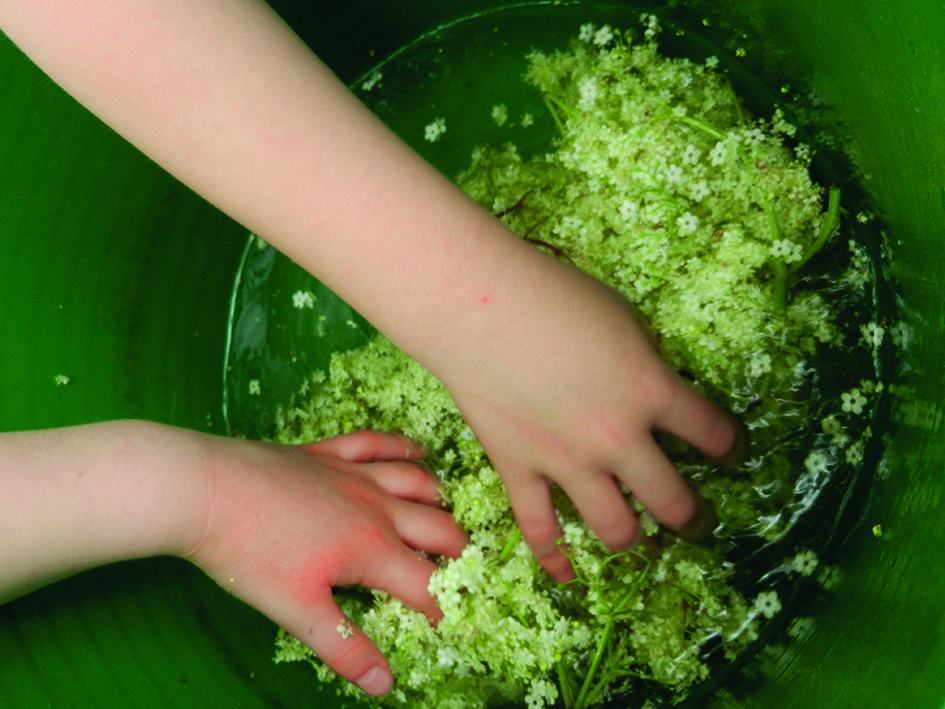 Elder sticks are among my favourite resources for play, not least because they are so abundant; they can be harvested without fear of causing lasting damage to the plant.
Elder sticks are among my favourite resources for play, not least because they are so abundant; they can be harvested without fear of causing lasting damage to the plant.- For children that love to explore through touch, the sticks, leaves and trunk offer much to feel – older trunks are deeply ridged and small fingers will easily slide in and out and up and down these fissures. Newer branches are dimpled and leaves can be effortlessly crushed or crumpled even by the youngest hands.
- Elder's smell does change over the course of the year. A good way to record this is to film children sniffing the flowers, then the leaves in high summer, the berries in autumn and the bare trunks in winter. Try to capture their expressions as well as the words they use to describe the seasonal sensations.
- Squash elderberries in small dishes to make a dark ‘ink’ for mark-making. As the berries are so small, children might need to work hard to squash them between their fingers. If you are able to bring a blender into the setting, use it to create a thick purple paste of elderberries to create textured marks.
myth, magic and culture
 In the Harry Potter books, elder plays a central role towards the end of the series, with an elder wand possessing magical and mythical properties. Making elder wands is very simple. Find branches with knobbly bits on and whittle in between the lumps for the authentic elder wand.
In the Harry Potter books, elder plays a central role towards the end of the series, with an elder wand possessing magical and mythical properties. Making elder wands is very simple. Find branches with knobbly bits on and whittle in between the lumps for the authentic elder wand.- Traditionally, elder was believed to ward away evil, so people would grow it close to their home. It is also often spotted in graveyards and is connected with fairies – some people believed sitting under an elder tree would enable them to see fairies having a celebratory feast; other cultures believe falling asleep under an elder would mean you never wake up.
superhero feature
Its edible flowers and berries, which have been traditional ingredients for hundreds of years and have become fashionable again in recent years – with elderflower cordial on supermarket shelves and elderberries adding a sharp tang to jams, jellies and crumbles.
As a bonus, elder twigs have dozens of uses – check out the project springboards for ideas.
elder STEM projects
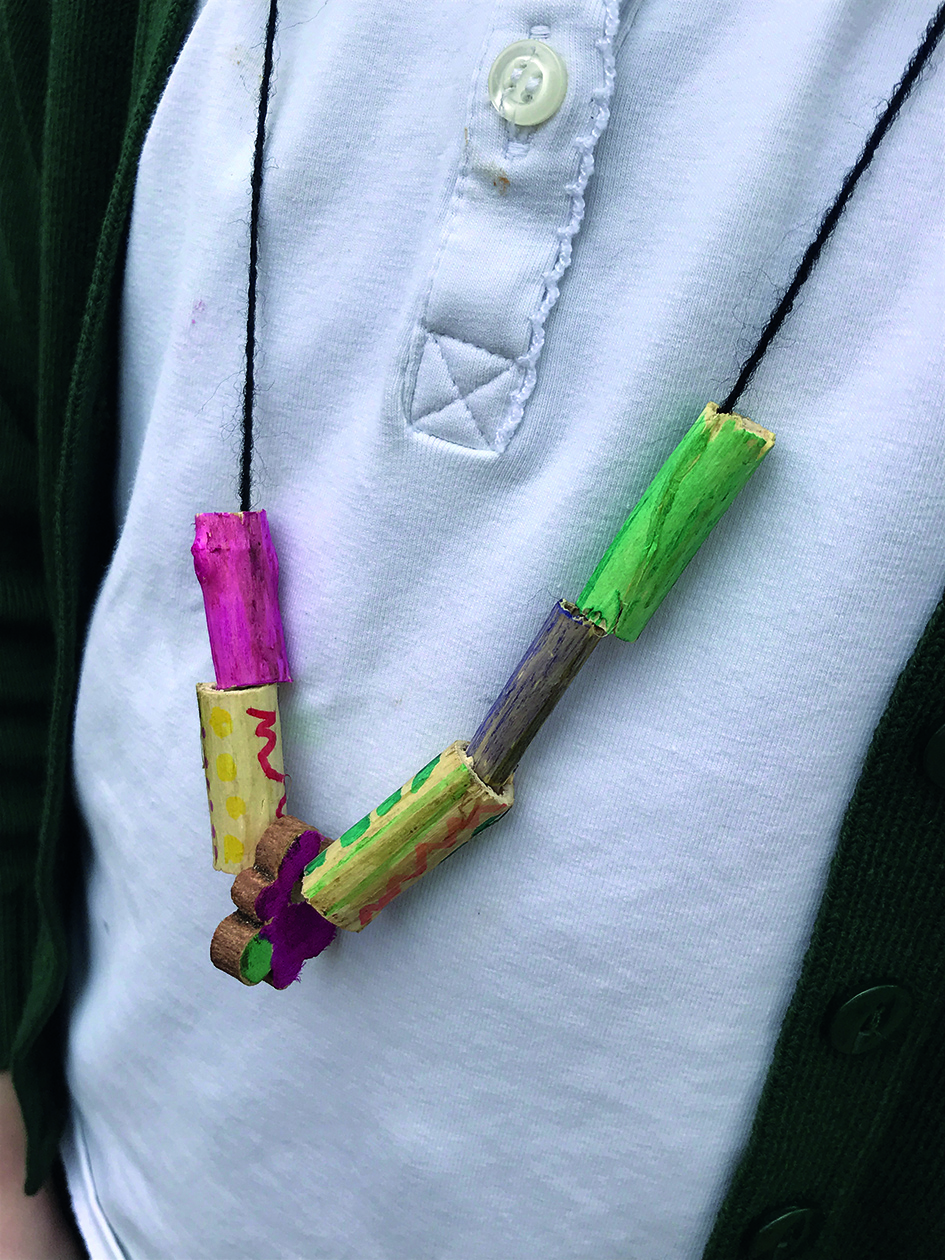 A super springtime project is to make and decorate elder beads. Young children can carry out all aspects of this project, with supervision. You will need small secateurs, metal tent pegs or wooden skewers, string and something to decorate the beads with, plus whittlers if children want to remove the elder bark. Use the secateurs to cut short lengths of new elder twigs, then poke out the central pith using the tent peg or skewer. Decorate the beads, then thread the string through the middle of the bead; I have a mattress needle that I use for this purpose – it is a really long, chunky needle with an eye big enough to allow string to pass through.
A super springtime project is to make and decorate elder beads. Young children can carry out all aspects of this project, with supervision. You will need small secateurs, metal tent pegs or wooden skewers, string and something to decorate the beads with, plus whittlers if children want to remove the elder bark. Use the secateurs to cut short lengths of new elder twigs, then poke out the central pith using the tent peg or skewer. Decorate the beads, then thread the string through the middle of the bead; I have a mattress needle that I use for this purpose – it is a really long, chunky needle with an eye big enough to allow string to pass through.
The ‘pith pushing’ method can also be used to make pea shooters, with longer, chunkier lengths of elder twigs. Some sticks will have lots of pith in, and those, once cleaned out, make marvellous pea shooters. Mark out a target on the ground so that children aim their peashooters downwards rather than at each other.
Children who have mastered making elder beads and pea shooters and can whittle proficiently might like to try creating May whistles. I like the instructions at www.jonsbushcraft.com/elderwhistle.
next month – dog rose
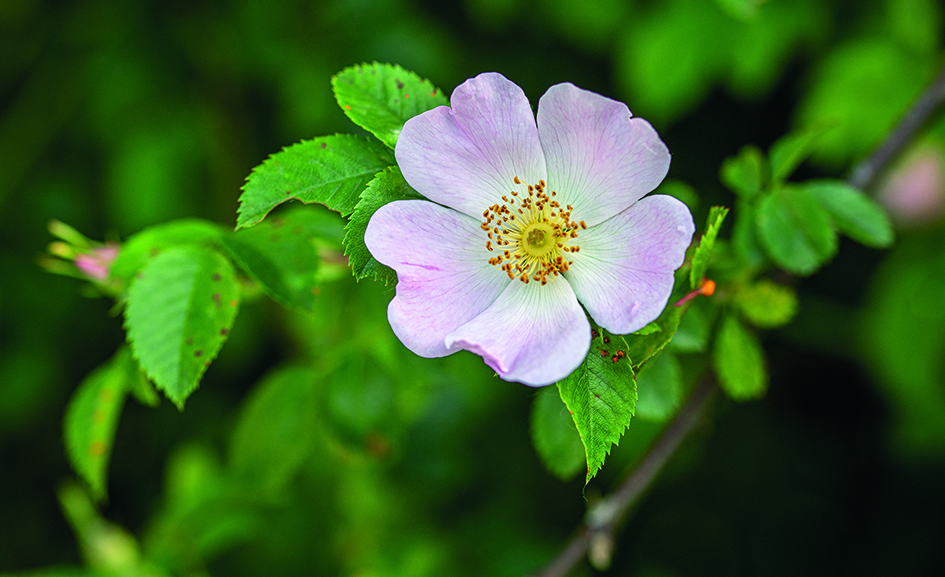 Dog rose is the next plant we’ll be exploring – the quintessential British hedgerow plant. If you’re an urban setting, this could be more difficult to find, so perhaps use May to find a source you can harvest a few stems, leaves and flowers from, or purchase a potted dog rose plant.
Dog rose is the next plant we’ll be exploring – the quintessential British hedgerow plant. If you’re an urban setting, this could be more difficult to find, so perhaps use May to find a source you can harvest a few stems, leaves and flowers from, or purchase a potted dog rose plant.









